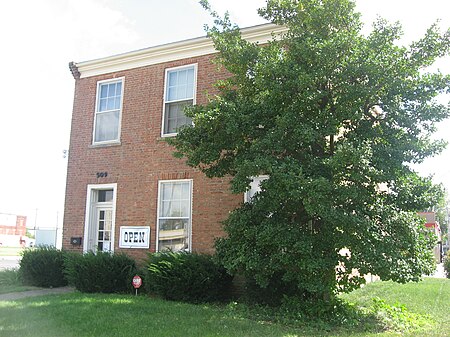William Young House (New Albany, Indiana)
1837 establishments in IndianaBuildings and structures in New Albany, IndianaFederal architecture in IndianaHistoric house museums in IndianaHouses completed in 1837 ... and 6 more
Houses in Floyd County, IndianaHouses on the National Register of Historic Places in IndianaLouisville metropolitan area stubsMuseums in Floyd County, IndianaNational Register of Historic Places in Floyd County, IndianaSouthern Indiana Registered Historic Place stubs

The William Young House is a historic home located at New Albany, Indiana. It was built about 1837, and is a two-story, three-bay, Federal style brick I-house. It features a two-story porch alongside the rear ell. Much of the interior remains intact. The house is open as a museum.It was listed on the National Register of Historic Places in 2010.
Excerpt from the Wikipedia article William Young House (New Albany, Indiana) (License: CC BY-SA 3.0, Authors, Images).William Young House (New Albany, Indiana)
West Market Street,
Geographical coordinates (GPS) Address Nearby Places Show on map
Geographical coordinates (GPS)
| Latitude | Longitude |
|---|---|
| N 38.281944444444 ° | E -85.829444444444 ° |
Address
Floyd County Historical Society Padgett Museum
West Market Street 509
47150
Indiana, United States
Open on Google Maps









